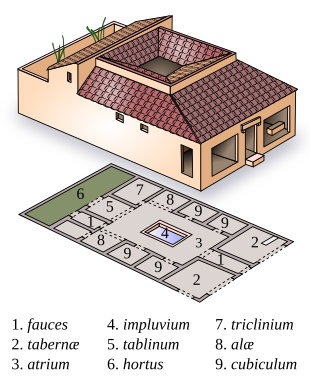
Back Taverna romana Catalan Taberna German Taberna romana Spanish Taberna erromatar Basque Taberna Finnish Taberna French Taberna Croatian Taberna Hungarian Taberna Italian 타베르나 Korean

A taberna (pl.: tabernae) was a type of shop or stall in Ancient Rome. Originally meaning a single-room shop for the sale of goods and services, tabernae were often incorporated into domestic dwellings on the ground level flanking the fauces, the main entrance to a home, but with one side open to the street. As the Roman Empire became more prosperous, tabernae were established within great indoor markets and were often covered by a barrel vault. Each taberna within a market had a window above it to let light into a wooden attic for storage and had a wide doorway. A famous example of such an indoor market is the Markets of Trajan in Rome, built in the early 2nd century by Apollodorus of Damascus.
According to the Cambridge Ancient History, a taberna was a "retail unit" within the Roman Empire and was where many economic activities and many service industries were provided, including the sale of cooked food, wine, and bread.
The plural form tabernae was also used to denote a way-station or hotel on roads between towns where genteel travellers needed to stay in something better than cauponae, and when the official mansio was not open to them. As the Roman Empire grew, so did its tabernae, becoming more luxurious and acquiring good or bad reputations.